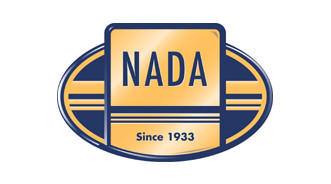NADA UCG: Wholesale Prices to Remain Flat This Week; Large Pickups See Biggest Spike

Overall, it looks like prices in the lanes will remain relatively flat over the course of this week, but interestingly, one pickup segment is set to see the biggest increase even as gas prices continue to rise.
According to NADA Used Car Guide, the large pickup segment is positioned to see the biggest increases over the course of the current week wtih prices expected to rise by 0.8 percent, or $150.
“Low inventory plus high demand continues to shield this segment from the increased cost of fuel,” officials explained.
Per Energy Information Administration data released this week, the average price of regular grade gasoline (all formulations) increased from $3.74 to $3.78, but the prices in the lanes don’t seem to be seeing the effects quite yet.
Next up, the compact utility (up 0.7 percent), luxury utility (up 0.5 percent), and midsize utility (up 0.5 percent) segments are also expected to see minor increases over the course of the current week, officials shared.
And following the overall trend in the lanes, the large SUV and midsize car segments are expected to remain flat compared to last week.
On the other hand, only three of the segments NADA UCG tracks are expected to decline over the course of the current week: the compact car (down 0.5 percent), luxury car (0.4 percent) and midsize van (0.2 percent) segments.
Furthermore, the two-week average rate of depreciation for the midsize van segment saw the biggest drop at 2.5 percent, followed by the midsize utility segment at 1.1 percent.
“The primary culprit behind the mid-size van segment’s steeper fall was an increased number of 2012 model year versions of the Dodge Grand Caravan hitting the lanes,” NADA UCG explained.
Four- and two-week AuctionNet wholesale average prices are created by collecting all AuctionNet records for vehicles up to five years of age for a specified period of time. Prices are then adjusted for changes in mileage and mix.
Current week prices are based on NADA’s proprietary used vehicle value model which includes assumptions for new vehicle prices, used vehicle supply, gasoline prices, and other economic factors.
| NADA Segment | Average AuctionNet® Wholesale Price | 2-Week v. Current | |||
| 4-Week Average | 2-Week Average | Current Week | % Change | $ Change | |
| Compact Car | $10,225 | $10,125 | $10,075 | -0.5% | ($50) |
| Compact Utility | $13,900 | $13,950 | $14,050 | 0.7% | $100 |
| Large Pickup | $18,225 | $18,250 | $18,400 | 0.8% | $150 |
| Large SUV | $22,850 | $22,950 | $22,950 | 0.0% | $0 |
| Luxury Car | $22,700 | $22,550 | $22,450 | -0.4% | ($100) |
| Luxury Utility | $25,200 | $25,025 | $25,150 | 0.5% | $125 |
| Mid-Size Car | $12,025 | $12,000 | $12,000 | 0.0% | $0 |
| Mid-Size Utility | $16,650 | $16,475 | $16,550 | 0.5% | $75 |
| Mid-Size Van | $13,225 | $12,900 | $12,875 | -0.2% | ($25) |
High Gas Prices Have ‘Minimal Effect’ on Used Prices
Jonathan Banks, senior analyst with the NADA UCG, also offered his take on wholesale price values and why the recent $0.42 spike in gas prices has had a “minimal” impact on used-vehicle prices this month.
“This time around, rising gas prices have done little to shift consumer demand for late-model used vehicles. Buyers have become more accustomed to dramatic swings in gas prices,” Banks said. “As long as fluctuations are similar to what’s been seen in the past, consumers will stick with vehicles that best fit their lifestyles, rather than make unnecessary sacrifices for improved fuel economy.”
NADA UCG went on to explain why the gas price spike this year is different from 2011’s fuel-rate scare.
“In 2011, used-car prices increased significantly and light-truck prices decreased when gas prices grew from $3.07 a gallon in early January to a peak of $3.96 in May, according to the Energy Information Administration,” officials noted.
“Fast forward to spring 2012, gas prices followed a similar course toward a peak of $3.94 a gallon in April, but used-vehicle prices took a different path with car price appreciation much less than the prior year. Light-truck prices also remained relatively stable and actually increased moderately in some cases,” they continued.
In fact, From April to July of this year, the 3 percent average rate of depreciation for compact and midsize cars has led all others segments by a "wide" margin, while prices for mainstream light-truck segments have averaged a decline of 1.6 percent, says NADA UCG.
“The most recent jump in gas prices is largely responsible for slowing down the rate of depreciation for cars compared to the prior three months, but by historical standards the improvement has been mild,” Banks added.
“Even more notable is the continued price strength of light trucks in August. So far, higher gas prices have not had a noticeable impact on the demand for light-truck segments,” he continued.
He also noted that perhaps one of the reasons why consumers haven’t rushed into buying gas sippers as fuel rates rise this time around is that “used-vehicle buyers are becoming increasingly desensitized to dramatic and rapid changes in fuel costs at the pump.
“We should see the volatility of used-vehicle prices diminish as gas prices rise and fall in the future,” he concluded.


